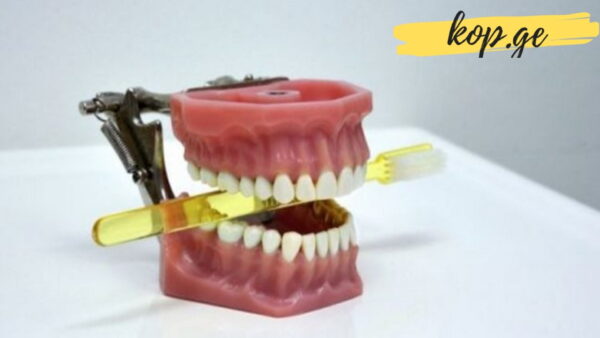4 Proven Ways to Eliminate Bad Breath – Read and Be Free!

Bad breath, also known as halitosis, is one of those problems that almost everyone encounters at some point in life, but not everyone is aware they have it. In fact, it’s often the people around us who notice it first. Imagine being in a conversation, at work, or even on a date, and the other person starts stepping back or avoiding eye contact—many times, the cause is unpleasant breath.
While it may feel embarrassing, the truth is that bad breath is usually a sign of something we can easily fix. From poor oral hygiene to certain lifestyle choices, halitosis can have many causes. The good news is that with a few simple changes, you can dramatically improve your breath and feel more confident in any situation.
In this article, you’ll discover four tried-and-true methods to get rid of bad breath. Each method addresses one of the major causes, and when combined, they can make a huge difference in your daily life.
1. Choose the Right Toothbrush
It may sound simple, but the type of toothbrush you use plays a crucial role in preventing bad breath. Many people think all toothbrushes are the same, but that’s far from the truth.
When shopping for a toothbrush, look for one with soft bristles and a small head. A small head allows you to reach the tight corners of your mouth—especially the back molars, which are hotspots for food particles and bacteria. Soft bristles are also gentle on your gums and enamel, preventing irritation while still effectively cleaning.
Equally important is the frequency of changing your toothbrush. A toothbrush that’s older than three months loses its effectiveness and can even harbor bacteria of its own. If you’ve recently been sick, it’s a good idea to replace it sooner.
And remember: brushing isn’t just about the visible surface of your teeth. You need to carefully clean the spaces between your teeth and along the gum line. Food debris and plaque in these hidden areas are major culprits for odor. Pairing brushing with flossing ensures you’re removing the particles that cause bacteria to thrive.
2. Use Fluoride Toothpaste
Another key step in keeping your breath fresh is choosing the right toothpaste. While toothpaste flavors like mint can temporarily mask odors, what truly matters is fluoride content.
Fluoride is a mineral that strengthens tooth enamel, making it more resistant to decay. Why does this matter for breath? Because healthy teeth equal fresher breath. Cavities, weakened enamel, and gum disease are often linked to chronic bad breath. By protecting your teeth from decay, you also reduce the bacteria that produce foul-smelling gases.
Most commercial toothpastes already contain fluoride, but it’s always good to double-check the label. For even better results, you might consider using a mouthwash with fluoride as part of your daily routine. This not only strengthens enamel but also flushes out bacteria and freshens your entire mouth.
3. Eat Plenty of Fresh Herbs
Did you know that your diet plays a huge role in how your breath smells? While foods like onions, garlic, and certain spices are notorious for causing odor, there are natural foods that do the opposite.
Fresh herbs such as parsley, basil, dill, and cilantro are excellent allies against halitosis. These herbs are rich in polyphenols, plant compounds that fight the bacteria responsible for bad breath. For example, basil has strong antibacterial properties, while parsley contains chlorophyll—the pigment that gives plants their green color.
Chlorophyll is especially powerful because it acts as a natural deodorizer. Chewing on a handful of parsley or cilantro after a meal can neutralize odors almost instantly. Many cultures around the world have long traditions of chewing herbs after meals for exactly this reason.
In addition to herbs, crunchy fruits and vegetables like apples, carrots, and celery can also help. Their texture acts as a natural scrub for your teeth, and their water content stimulates saliva production. Saliva is your body’s natural defense against bad breath, as it washes away bacteria and food particles.
4. Use a Tongue Scraper
Perhaps the most overlooked—but most important—step in fighting bad breath is cleaning your tongue. Studies show that 40–70% of the bacteria responsible for bad breath are located on the surface of the tongue. These bacteria accumulate in the grooves and crevices, producing sulfur compounds that smell unpleasant.
Unfortunately, brushing your tongue with a toothbrush doesn’t always do the job. That’s where a tongue scraper comes in. This small tool, usually made of plastic or metal, is designed specifically to remove bacteria and debris from the tongue’s surface.
To use it, simply place the scraper at the back of your tongue and gently pull it forward. Rinse the scraper after each pass, and repeat until your tongue feels clean. The difference in freshness can be immediate and dramatic.
If you don’t have a scraper, you can temporarily use a spoon, but investing in a proper scraper is worth it for long-term oral hygiene.
When Bad Breath Doesn’t Go Away
It’s important to note that if you follow all these tips—brushing, flossing, using fluoride toothpaste, eating herbs, and scraping your tongue—but still struggle with bad breath, it may be a sign of an underlying health issue.
Sometimes chronic halitosis is linked to digestive problems, sinus infections, or metabolic conditions. In such cases, no amount of brushing or herbs will fully solve the problem. That’s why it’s recommended to consult with a gastroenterologist or dentist if bad breath persists despite good oral care.
Final Thoughts
Bad breath is more than just a social inconvenience—it can affect your self-esteem, relationships, and even your professional life. But the encouraging news is that in most cases, it’s preventable and treatable with consistent daily habits.
By choosing the right toothbrush, using fluoride toothpaste, incorporating fresh herbs into your diet, and making tongue scraping a regular practice, you can enjoy fresh breath every day. And if the problem continues, seeking medical advice ensures you address the root cause rather than just the symptoms.
Fresh breath equals confidence. And with these four proven methods, you’re only a few simple steps away from feeling your best in every conversation.












